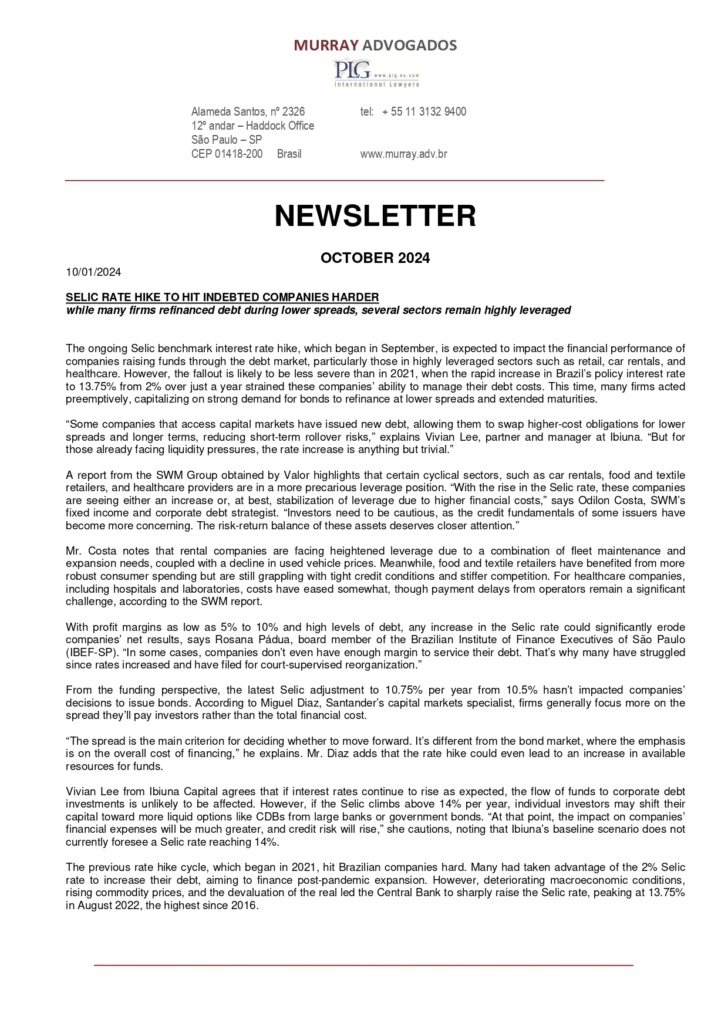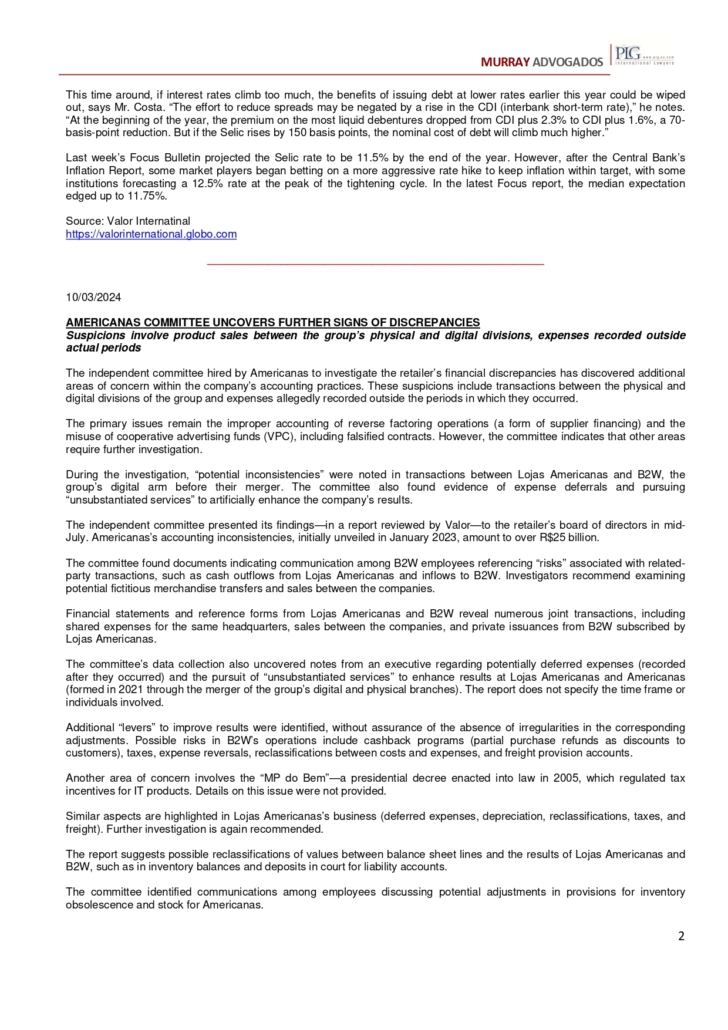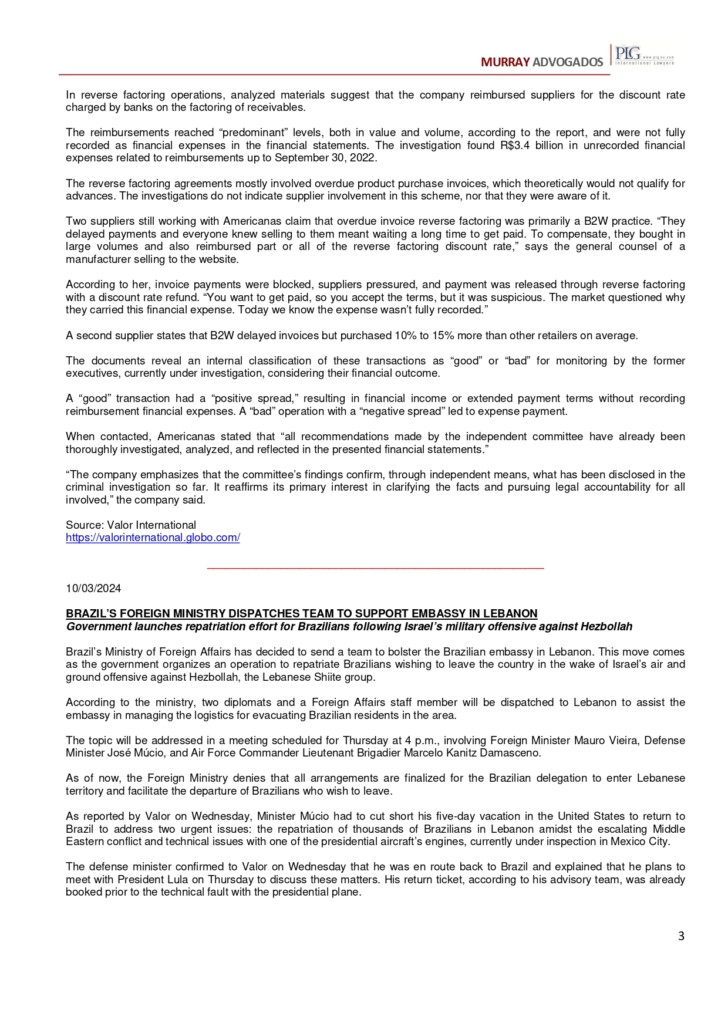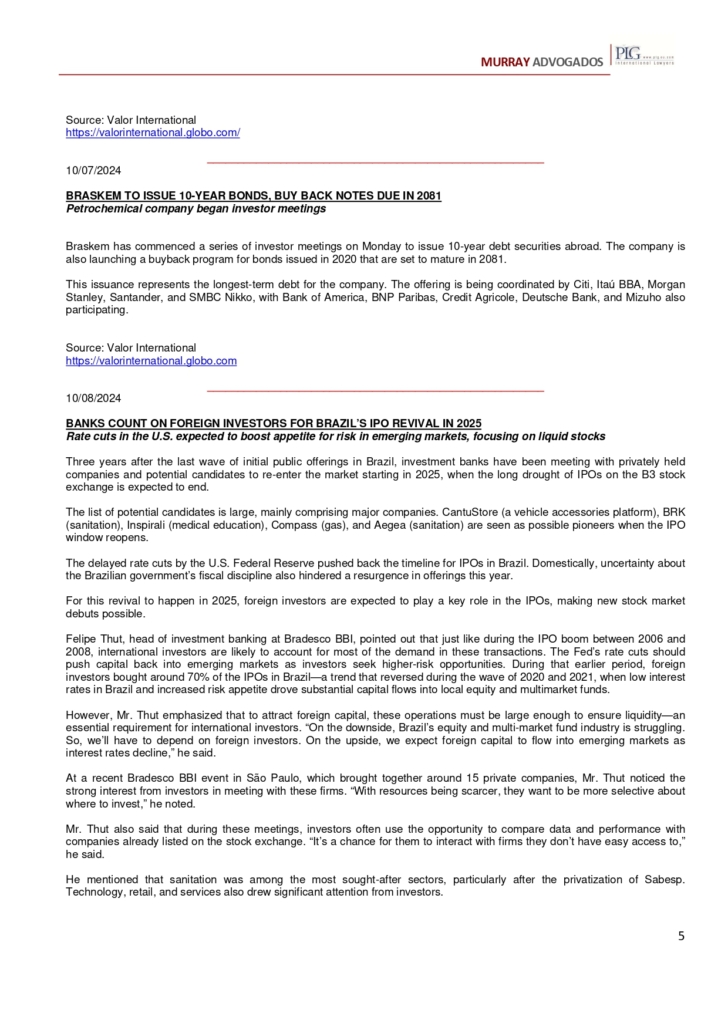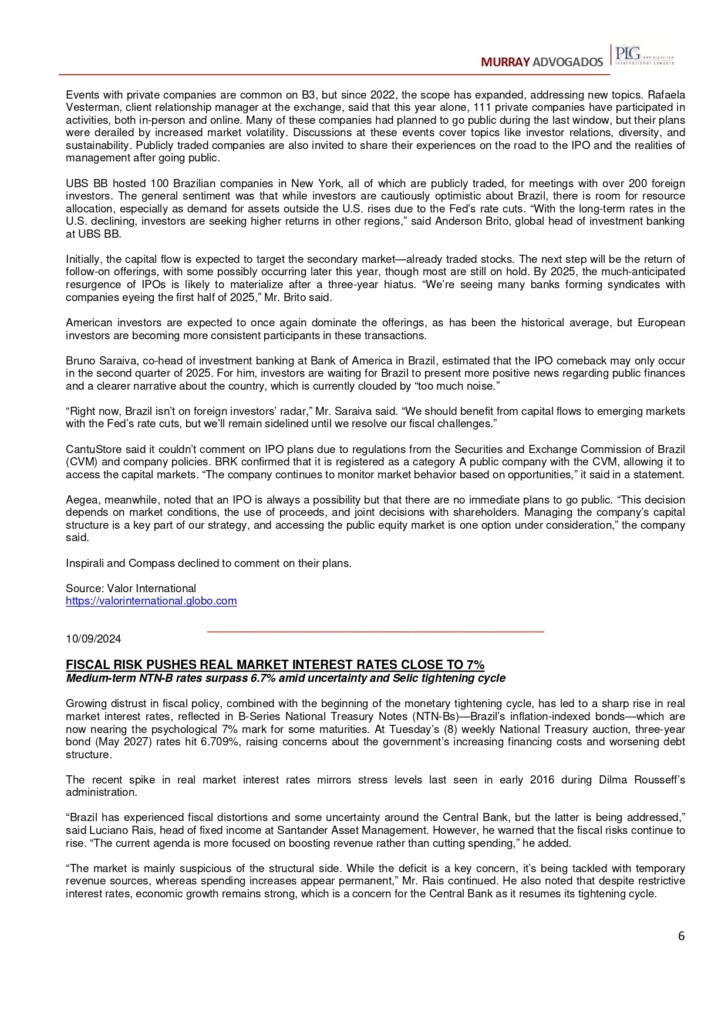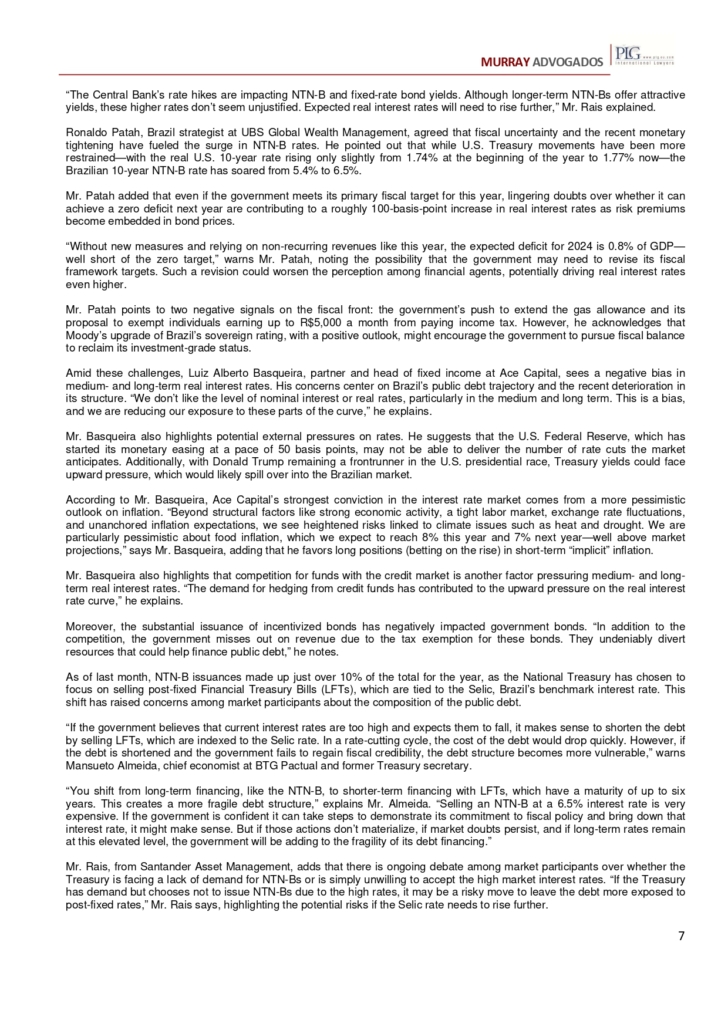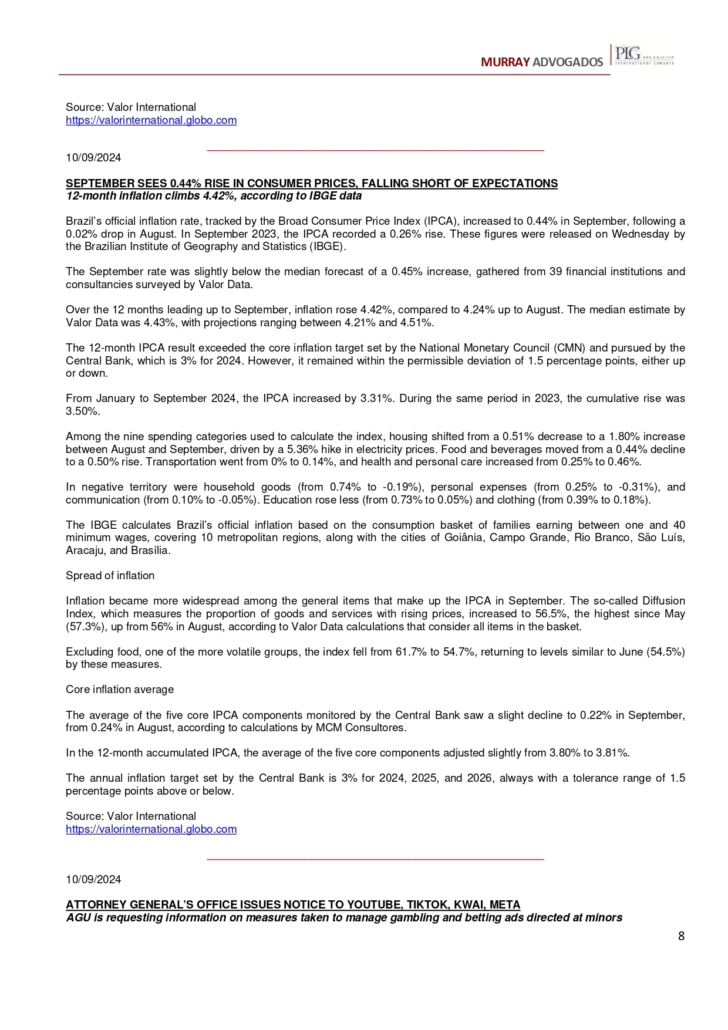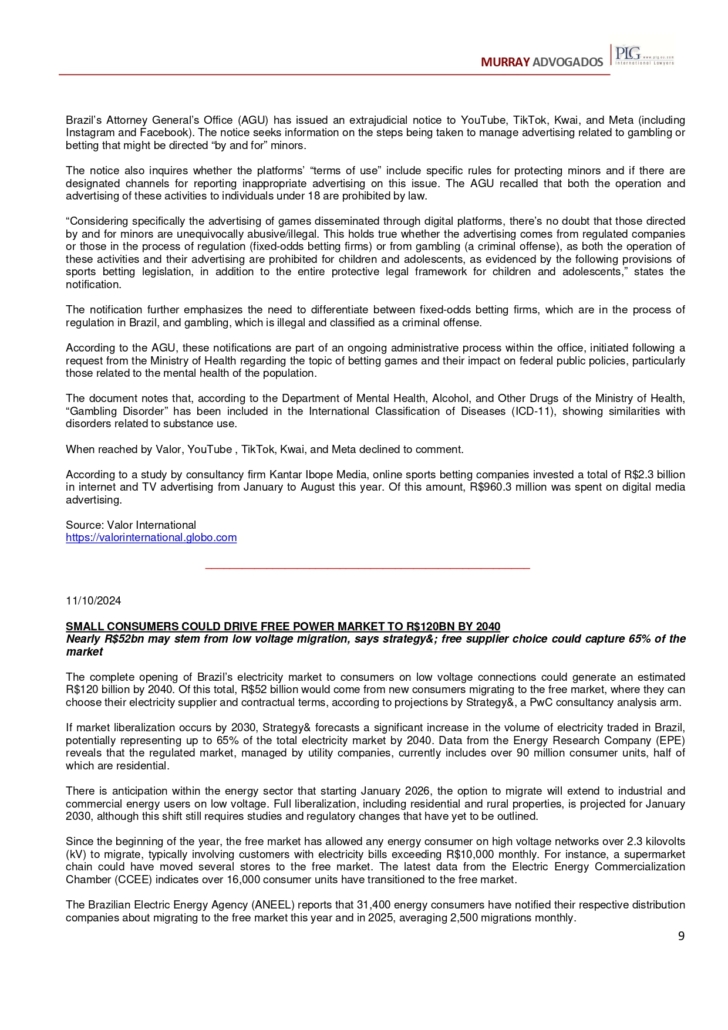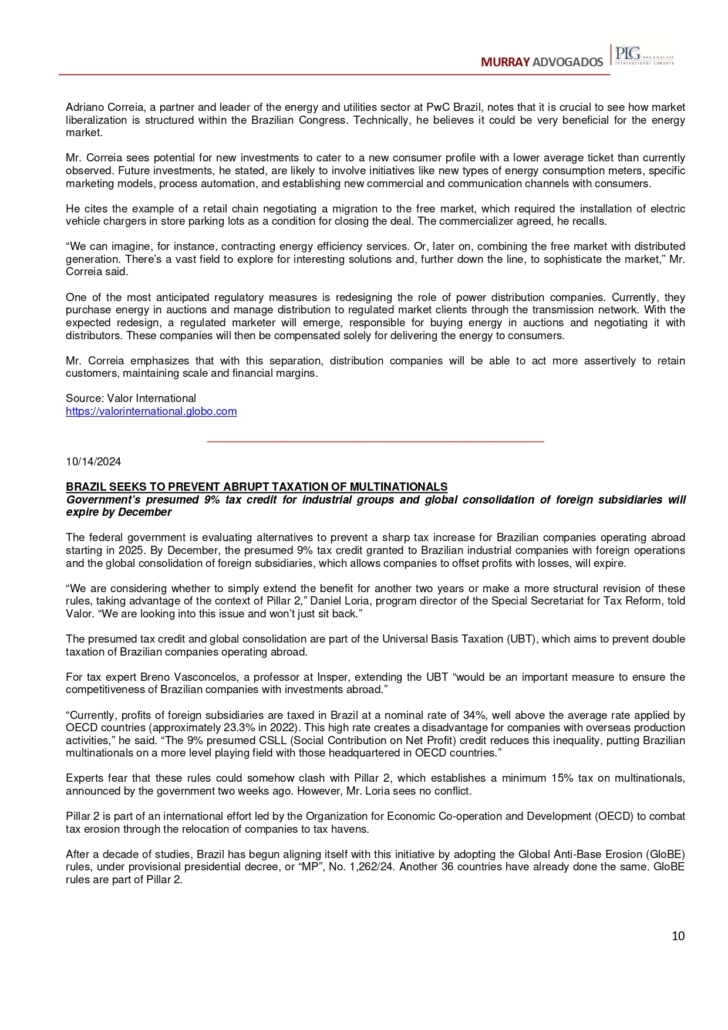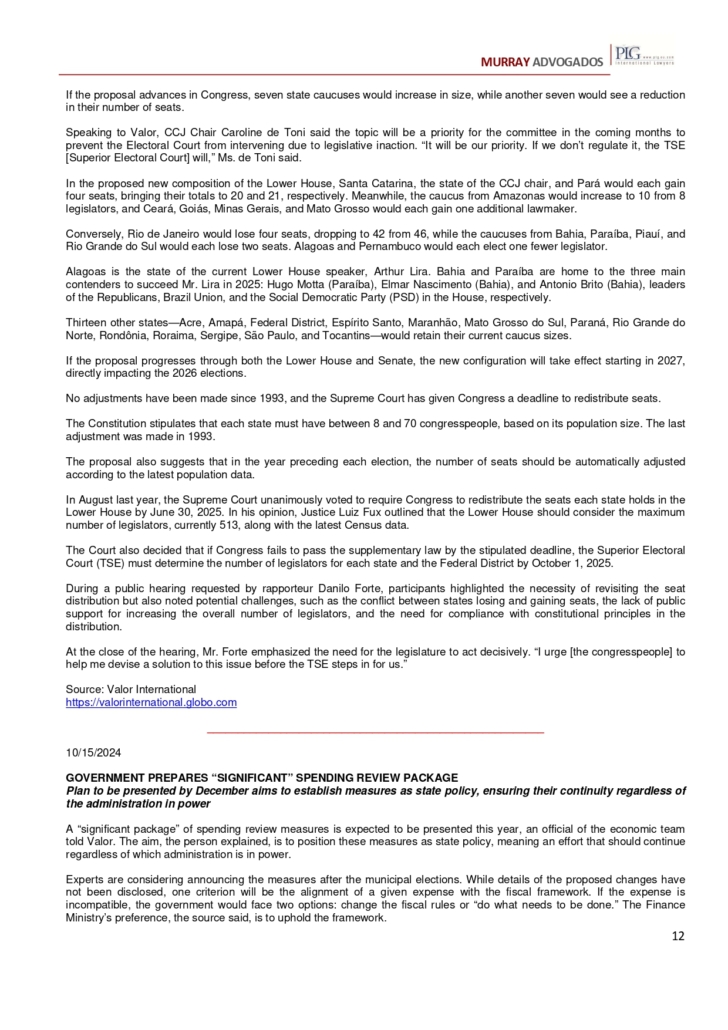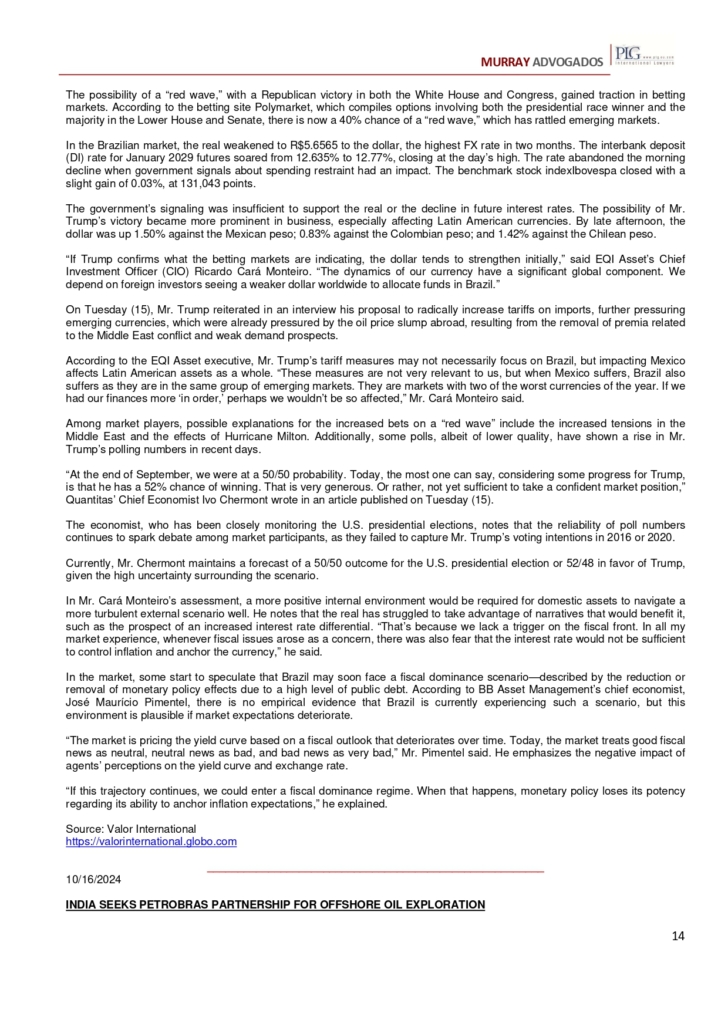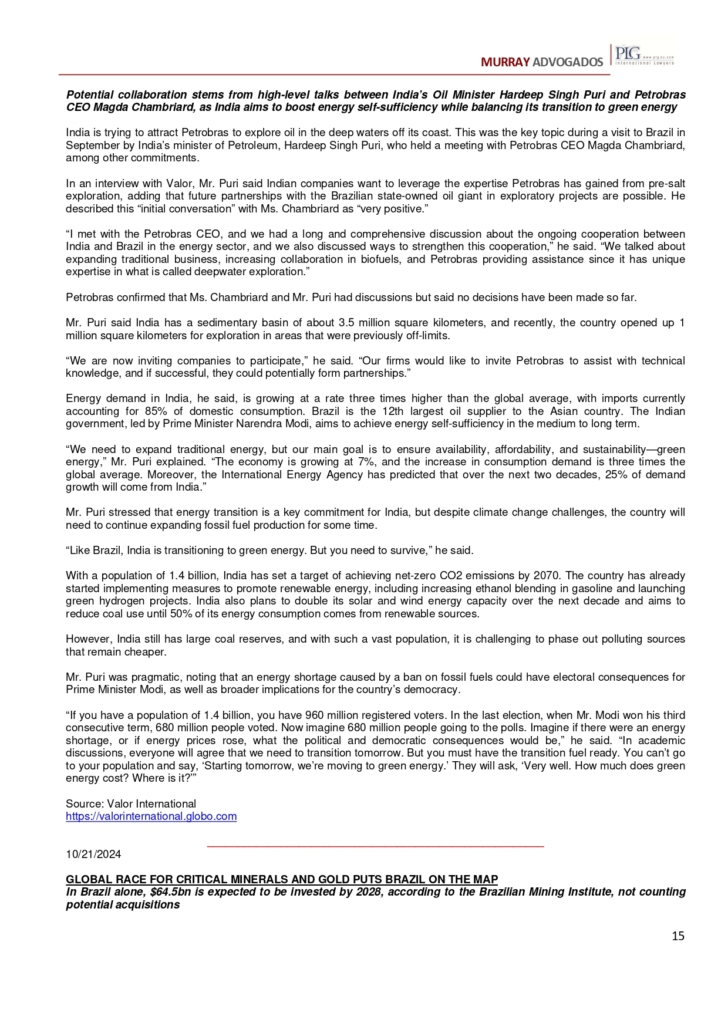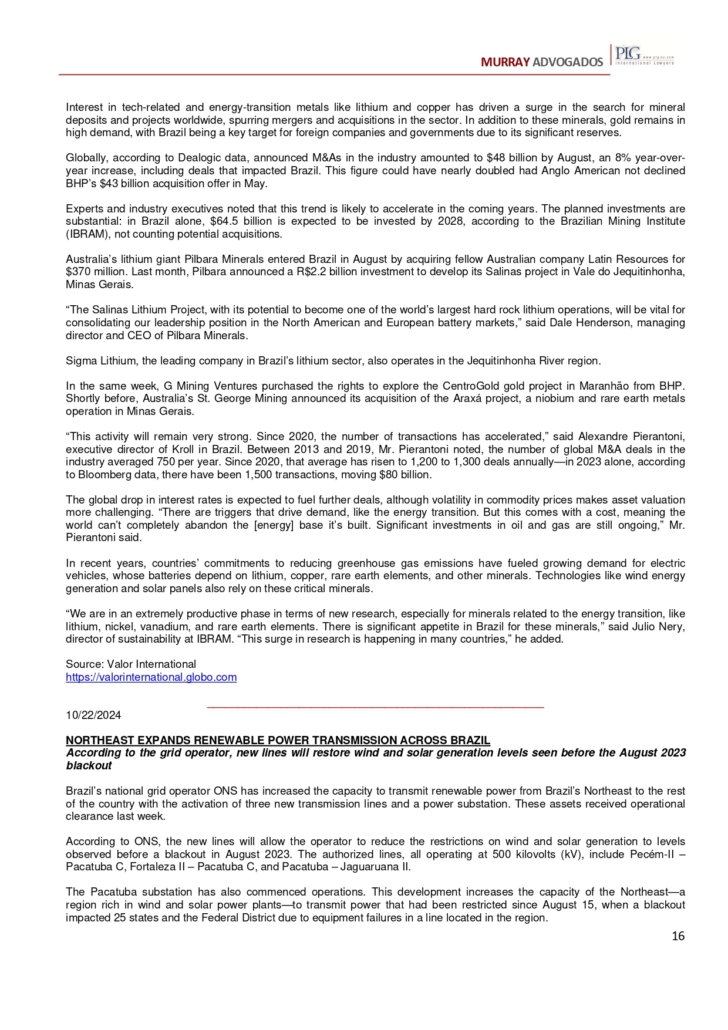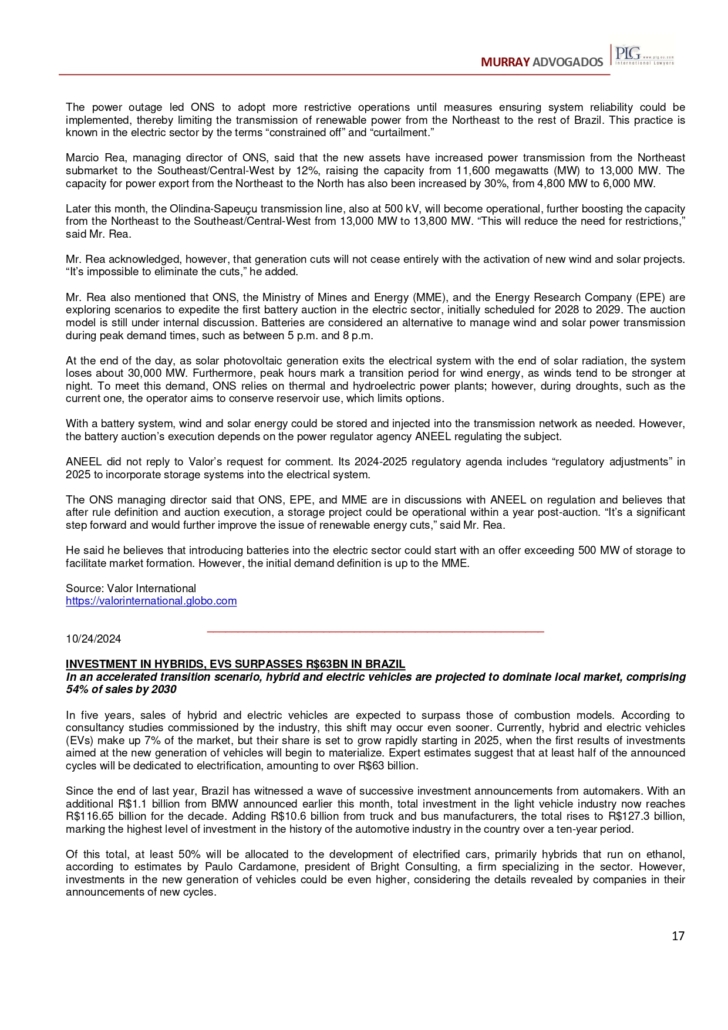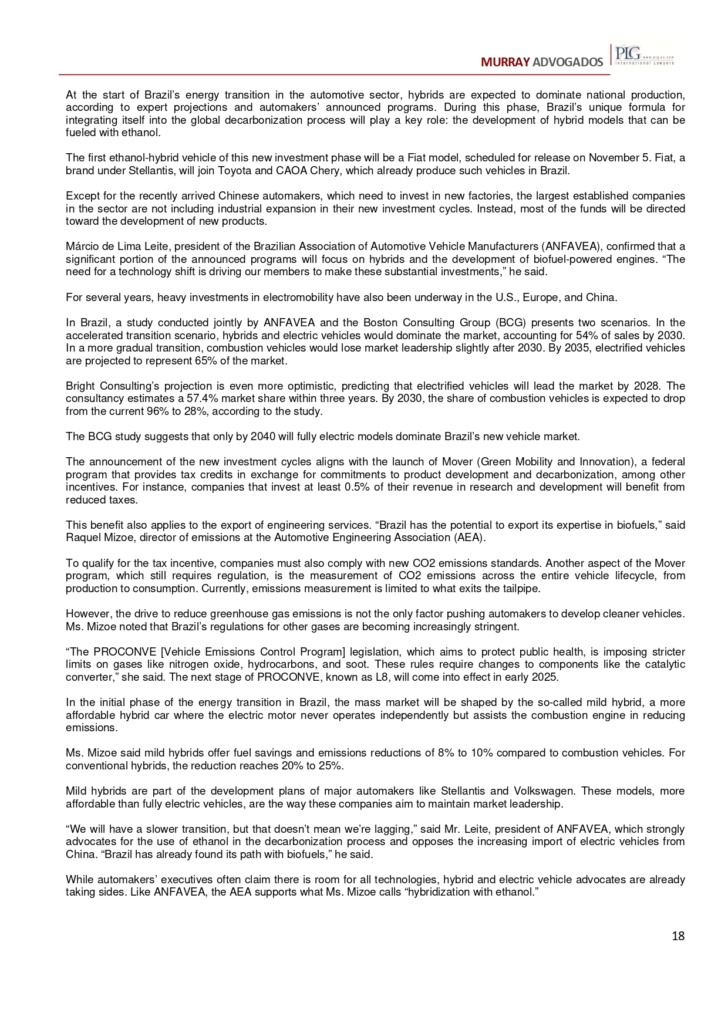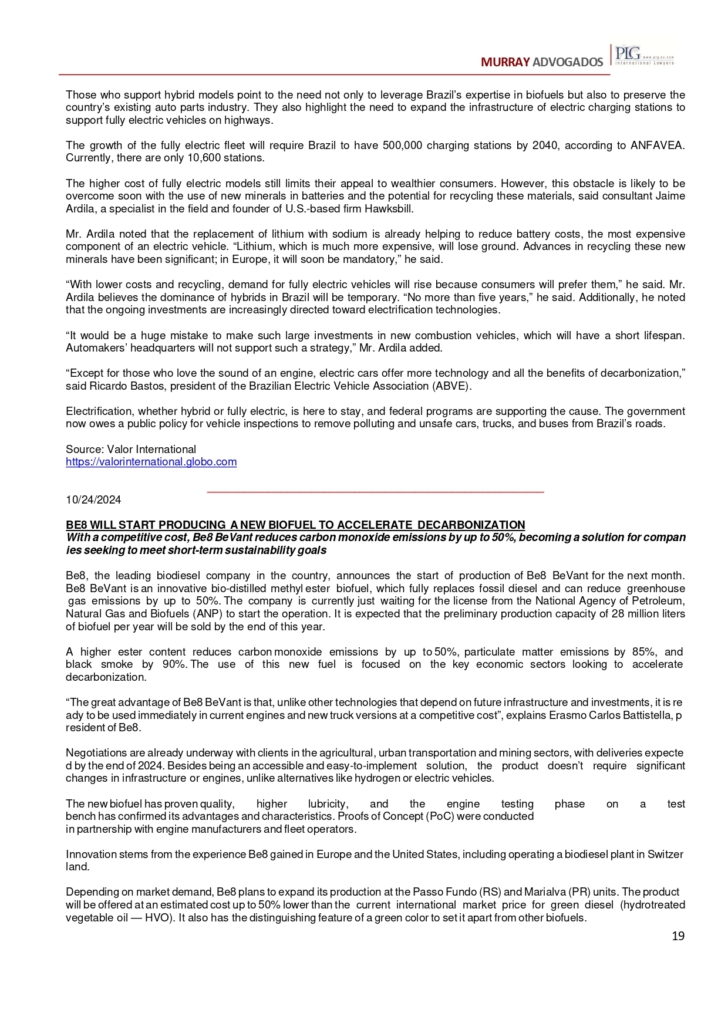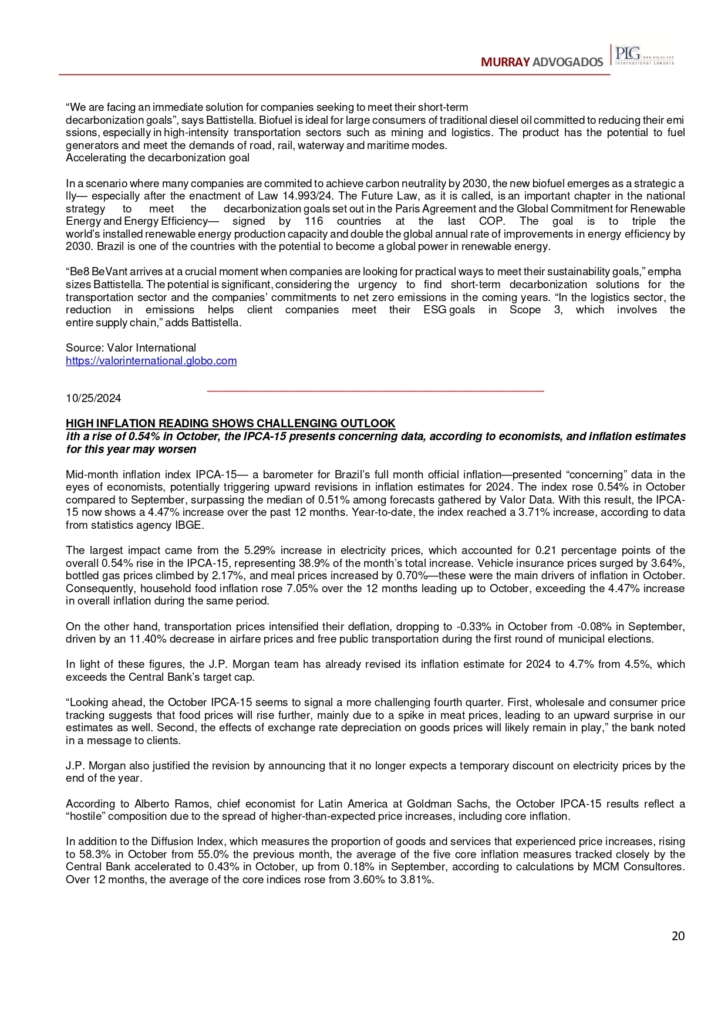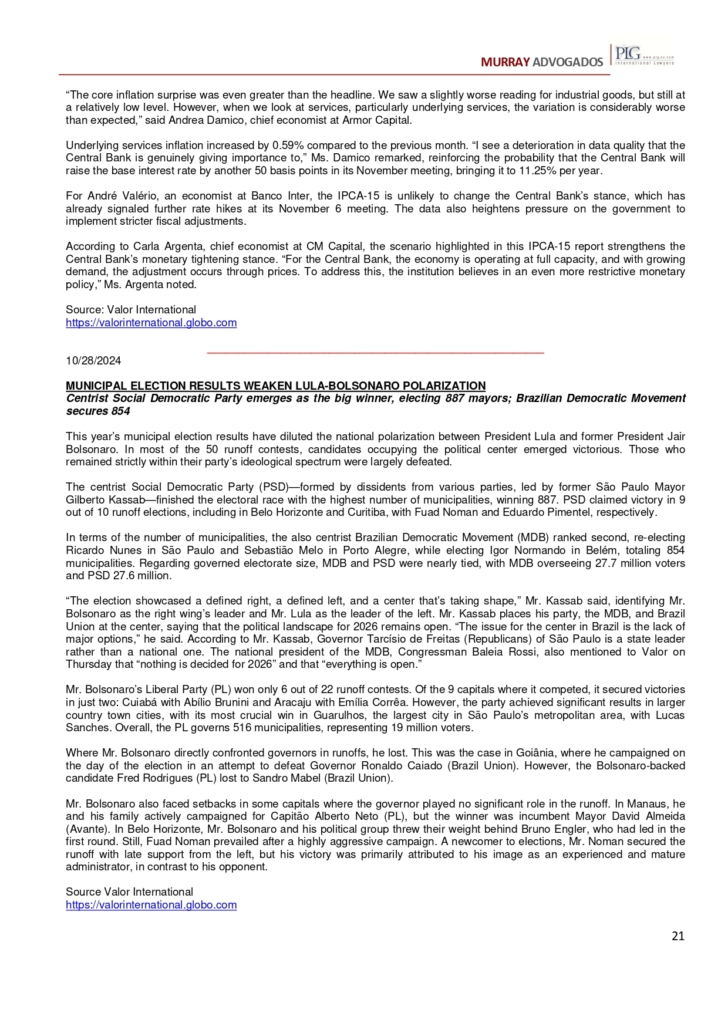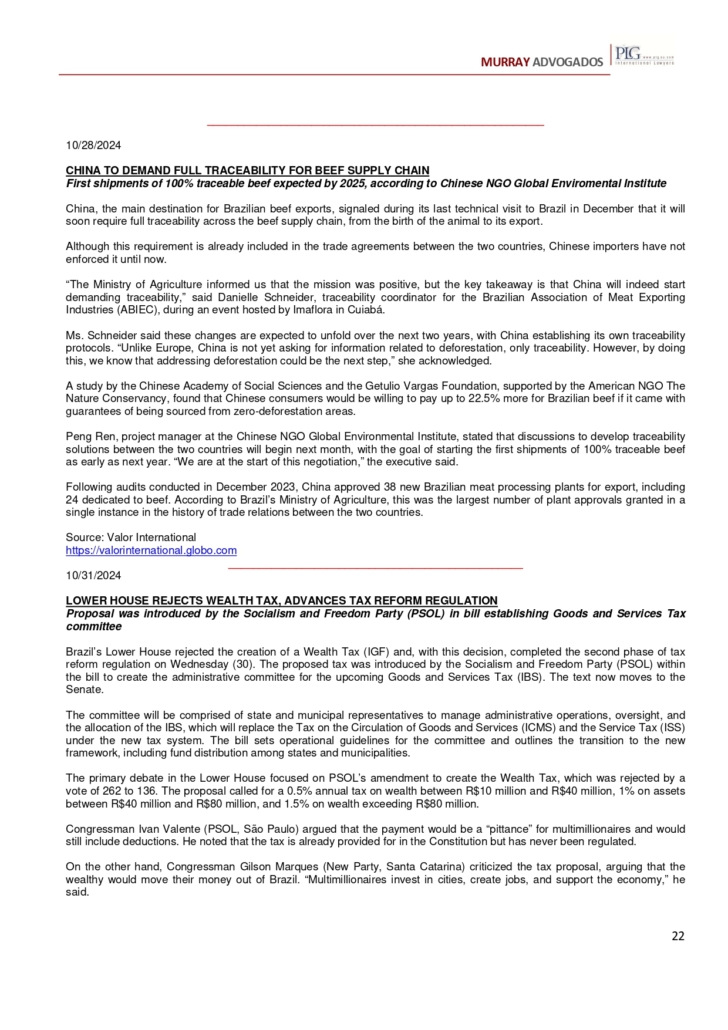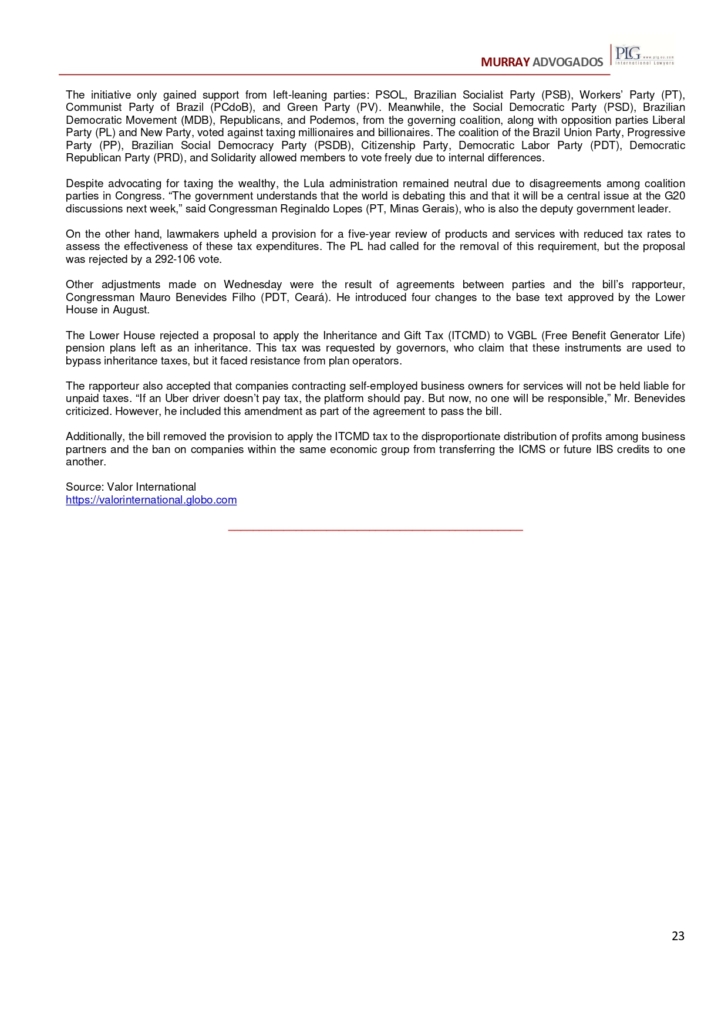Analysts highlight tensions in climate, human rights, and geopolitics, but more aligned if Kamala Harris wins
11/05/2024
The outcome of Tuesday’s U.S. elections could pressure the convergence of the U.S.-Brazil agenda and the stability of bilateral relations. Experts consulted by Valor suggest that much of the economic ties’ robustness is likely to remain, regardless of the winner. Still, risks of discord in areas like climate, human rights, and geopolitics may increase.
The U.S. is the top investor in Brazil. Commercial engagement is also growing, with Brazilian exports to the U.S. hitting a record this year, helping reduce Brazil’s trade deficit with the U.S.
Beyond the economic sphere, relations between the countries, currently led by presidents Biden and Lula, converge on cross-cutting issues like climate but are not free of disagreements.
“Bilateral relations have reached a stage of maturity under the Biden-Lula agenda, converging on topics like the environment and human rights, particularly concerning decent work, with initiatives from the United Nations and the International Labor Organization (ILO) to regulate app-based activities,” said Cristina Pecequilo, an international relations professor at the Federal University of São Paulo.
“The larger issue remains in the geopolitical arena. As Brazil returns to a more neutral, independent foreign policy, reviving classic international agenda principles, not just in bilateral relations, a series of discrepancies arise from the fact that the U.S. would rather see Brazil supporting its policies more directly and not diverge, for instance, on conflicts between Russia and Ukraine and Israel and Palestine.”
Besides that, she added, is the weight of the growing Brazil-China relationship within BRICS, the very Brazil-U.S. relationship, and the upholding of reforms in the international order, which conflict with U.S. interests.
If Ms. Harris wins, she noted, continuity in proximity on cross-cutting issues is expected until the end of President Lula’s term, with divergence on some geopolitical matters.
Under a Trump administration, there could be greater economic protectionism and increased pressure for Brazil not to deepen ties with China amid the China-U.S. tensions.
“A Trump victory might also embolden far-right forces to feel more represented in exerting pressure. Thus, a Trump administration would certainly make it harder for Brazil to navigate these cross-cutting agendas.”
Bruna Santos, head of the Brazil Institute at the Wilson Center in Washington, said there is an overlap of agendas and quite similar views for the first time in U.S.-Brazil relations.
“Both current presidents are over 70 and became presidents after well-established political careers, confronting right-wing leaders with similar characteristics, such as [Jair] Bolsonaro and [Donald] Trump, and both had election results challenged by public demonstrations on January 8 [2023] and January 6 [2021],” she said.
“Moreover, there is a shared labor agenda involving unions, a central point of their meeting in February 2023, with both looking at energy transition as a path for economic development. This is unique.”
Ms. Santos noted that Brazil and Latin America as a whole aren’t a priority for any White House candidates, but the Brazil-U.S. relationship today is solid. “They are good friends, good companions, good partners. They aren’t allies in foreign policy, but they have a very consolidated relationship,” she said.
“The fact that Brazil considers the U.S. its second-largest trade partner [after China] is highly significant, as is the level of American direct investment in the country. It’s a bilateral relationship based on high-value-added products, which is also very important for Brazil.”
The U.S. remains the largest investor in Brazil. American foreign direct investment (FDI) stock rose from $123.9 billion in 2020 to $190.8 billion in 2021 and $228.8 billion in 2023, the highest level since at least 2010, according to the Central Bank’s official records. This is over four times the direct investment stock from Spain, the second-ranking country.
Data from the American Chamber of Commerce for Brazil (AmCham Brazil) show that the U.S. share in Brazil’s FDI increased from 11.8% in 2015 to 21% in 2019 and 25.8% in 2023.
In recent years, trade in goods and services between the two countries has grown, with intensified investment flows, especially in sectors like technology and the green economy, said Abrão Neto, CEO of AmCham.
“We expect the positive trajectory in trade and bilateral investments will continue. The U.S. is the main destination for Brazilian exports of industrial goods and high-tech products like aircraft, machinery, and equipment,” he said.
“Additionally, we’re watching a new cycle of American investments in Brazil in sectors like technology, data centers, and renewable energy. In 2023, U.S. companies announced 126 greenfield projects, the highest volume in a decade. Conditions are favorable for these results to intensify.”
From January to September this year, Brazilian exports to the U.S. grew 10.3% compared to the same period in 2023, reaching a record $29.4 billion, according to the Brazil-U.S. Trade Monitor by AmCham Brazil.
In recent years, increased shipments to the U.S. have significantly reduced Brazil’s trade deficit with the U.S., which fell to $1 billion in 2022 from $13.9 billion in 2021.
He noted that there are presidential elections in Brazil or the U.S. every two years, a cycle of political changes that is anticipated.
“In general, governments and businesses in both countries handle these transitions well. Behind political cycles, there are consolidated, long-term economic interests,” he said. “Moreover, Brazil and the U.S. have institutional maturity and strong incentives to maintain this cooperation.”
He added that the current Democratic government’s emphasis on sustainability and climate would undergo significant change under a potential Republican administration, but recently adopted policies like the Inflation Reduction Act and the Chips Act have bipartisan support, indicating continuity regardless of this Tuesday’s election outcome.
The same applies to the importance placed on the U.S. geopolitical rivalry with China and supply chain resilience, topics that are likely to remain priorities on the American political agenda.
“For Brazil, the ideal is to seek balance, defending its interests and maintaining partnerships with both countries. But [this] will increasingly be like walking a tightrope,” added Abrão Neto.
*By Marsílea Gombata — São Paulo
Source: Valor International

